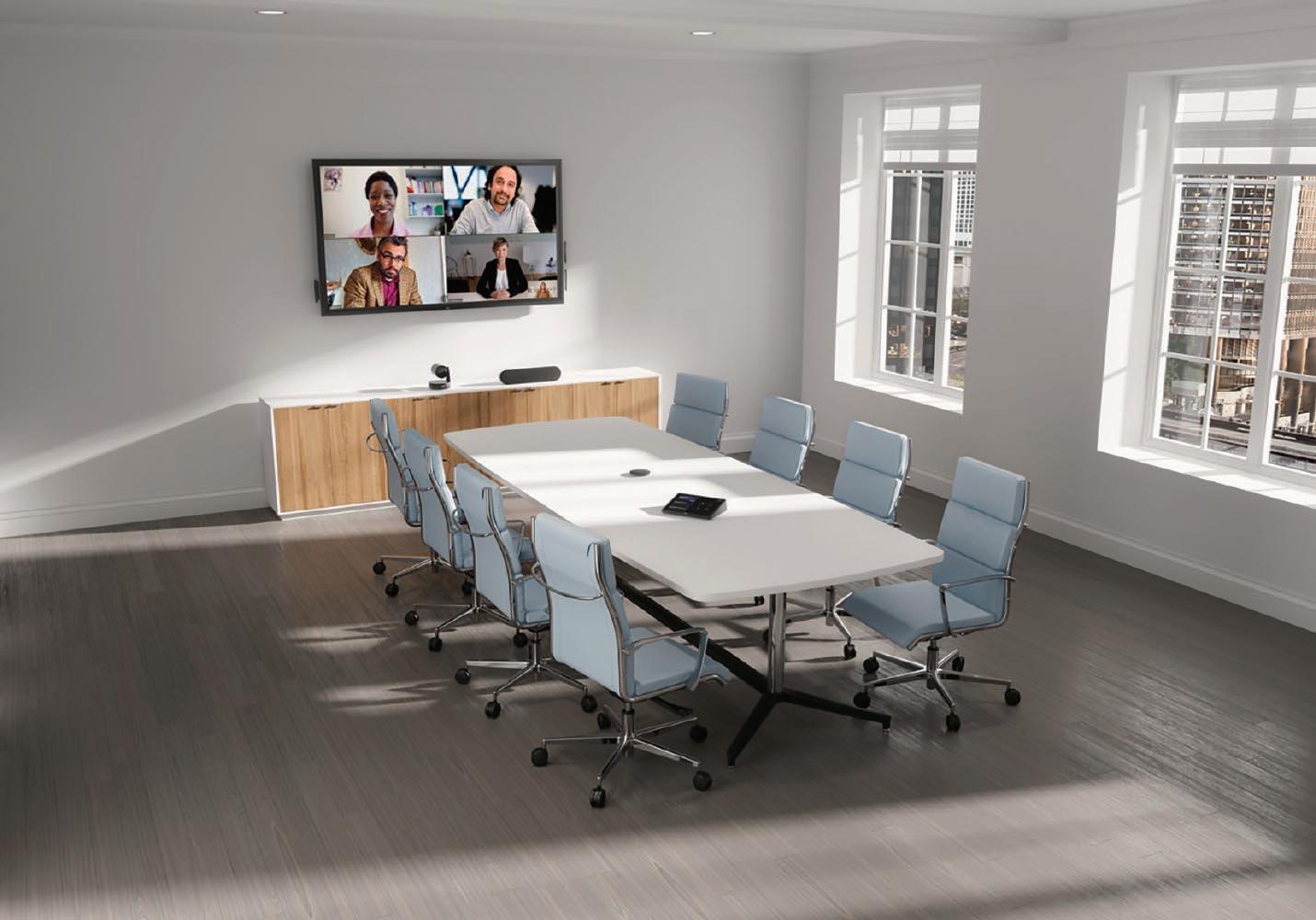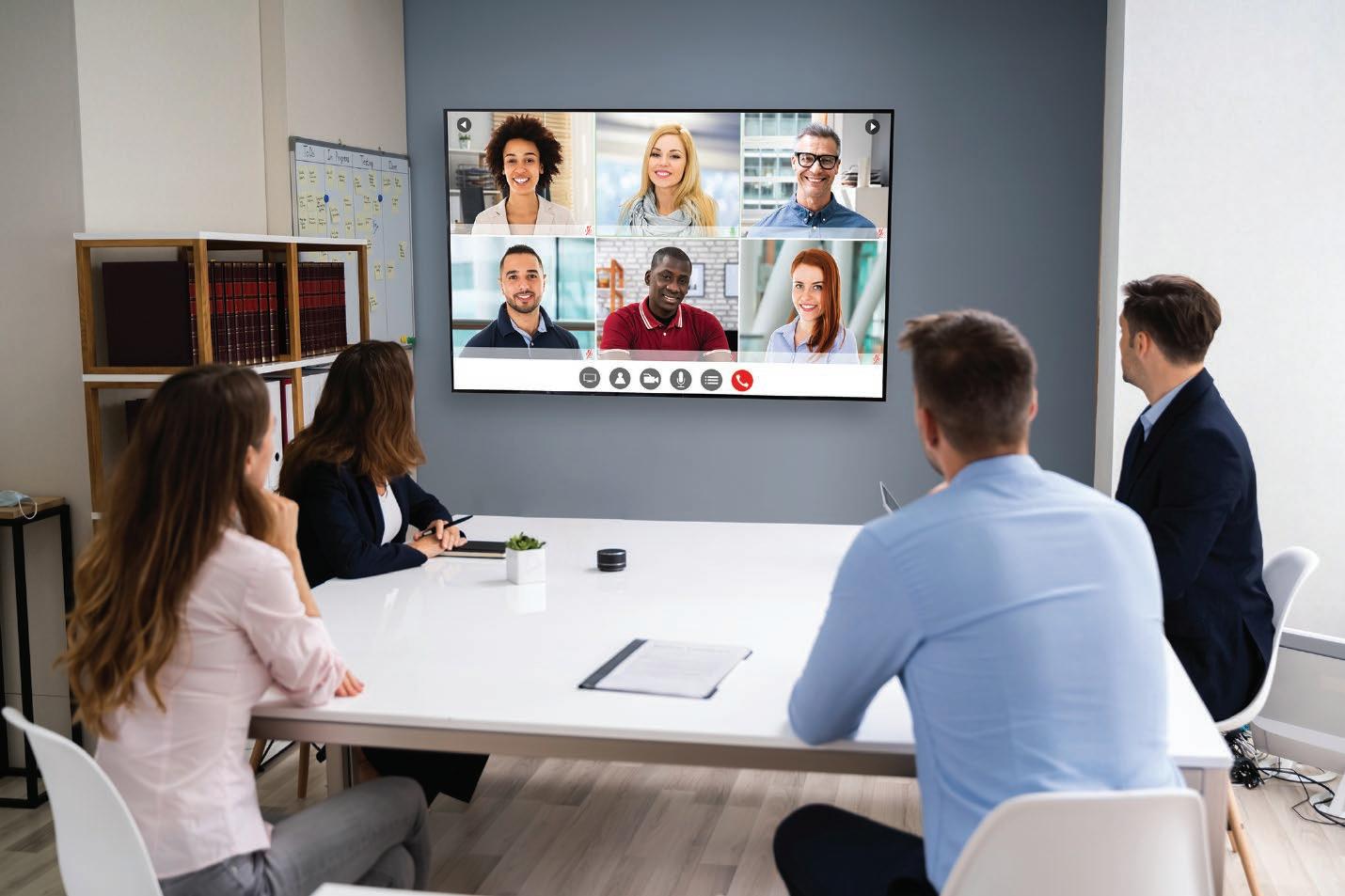
5 minute read
Size Matters: Why Screen Resolution is Crucial for Productivity
Jo Roth, Correspondent
Businesses have been upgrading to larger screen sizes and resolutions in the office environment. However, as they work from home, they risk losing all these gains.
THE WORLD is obsessed with resolution. Every new TV, computer, smartphone or tablet bids to outdo the last. In the blink of an eye, we have moved from high definition to ultra-high def, 4K ultra and beyond.
Higher definition improves performance, user experience and convenience. It stands to reason, therefore, that the same applies to the working environment. Over the last few years, offices have been upgrading the technical specifications of monitors to offer greater size, more workspace, and a higher definition.
However, little work has been done assessing the impact of a shift to remote working has had. In this article we will outline the benefits of larger screens and higher definition and how companies can lock in many of these gains in the remote working environment.
Two is Better Than One
Dual monitors have become increasingly common in the office environment. According to research from Jon Peddie Research, dual monitors can increase productivity from 20% to 30%6. A study from the University of Utah found that they reduce errors by 20% and increase job satisfaction and make work less stressful.
We spend much of our time cycling between different tabs, so it makes sense to view more than one screen at a time. Dual or multiple monitor setups allow workers to significantly reduce the amount of time it takes to undertake certain tasks including: • Data entry: Faster data entry with fewer errors. • Data sharing: Employees spend more time working on multiple programs. Having more than one monitor makes it easier to share data between them. • Research: Having one monitor for research while working on a document increases productivity and reduces fatigue caused by switching from one to another. • Drafting content from source material: Having source material directly available reduces the risk of errors. • Product comparison: Employees find it easier to make a direct comparison between one product and another if they have both in front of their eyes. Linked dual monitors will also allow users to work on large spreadsheets across both monitors or to keep chat or video conferencing boxes open. These can enable team members to remain connected even when physically separated.
Larger Higher Definition Monitors
Just as in the consumer world, employees have been migrating from standard 2k screens to 4k and beyond. These higher definition screens make images sharper and clearer; they reduce eye fatigue and improve the working experience.
In addition, higher definition workstations usually have more screen space to work with. This gives more surface with which to view multiple files, tabs, or programs.
More data from the University of Utah suggests that a larger screen size can boost productivity. The study compared the work times of people working across 18-inch 20-inch and 24-inch screens. Those working on 24-inch screens worked on average 52% faster than those on the smallest 18-inch screens. Even those working on 20-inch screens experienced a 44% boost compared to those on 18- inches7. Larger monitors, they concluded, could save up to 2.5 hours per day.
With technology evolving, monitors are expanding to 27-inch and 32-inch 4k monitors. These offer more space and more clarity together with the ability to view multiple applications. Depending on space, others are moving even further into the ultra-wide curved screen territory with screen sizes of more than 40 inches.
These setups often move into the multi monitor format with a main widescreen monitor being complimented by smaller screens.
Improving the Work Experience
A somewhat less tangible, but nevertheless vital, benefit comes in the form of the user experience. Having a larger screen with a higher resolution improves the entire experience. When screens are small, pixelated or flickering, working can feel awkward. This has a tangible impact on performance.
Larger screens are more comfortable to look at and reduce the risk of eye strain, headache or screen fatigue, which can limit a worker’s effectiveness. A study from eyeglass lens optics company Transitions Optical, shows that 79% of employees report at least one visual disturbance which affects their eyes during a day. More than half admit they take at least one break a day to rest their eyes because they feel painful or uncomfortable8 .
High resolution enables sharper graphics and larger screen sizes. Characters appear larger reducing the risk of screen fatigue, headaches and other forms of discomfort. This has long term health benefits. A study by spectacle makers Cubitts found that seven out of ten people have experienced eye problems while working from home9 .
Assessing Costs
Unfortunately, the move to remote working has reversed many of these gains. For most employees working from home means leaving behind their high spec office workstations and making do with whatever they have at home. They are moving from multiple monitors to just one, going from large PC screens to small laptops and from high resolution to low.
This has a number of impacts including reduced productivity, increased risk of error and lower job satisfaction. For many tech minded employees, a return to their high spec workstations is one of the attractions of returning to the office.
With hybrid work set to become a norm for many businesses, some are investing in improving domestic workstations. For example, Salesforce India has been paying individuals up to $250 to bring their home workstations up to the same specifications as their offices10. In March, Shopify gave its employees $1,000 to set up their home offices11 .
The exact impact, though, will depend on the nature of the work being done, how permanent remote working will be and the nature of individual jobs. Roles which involve high levels of multitasking, for example, will be more severely hit than others. At a time of economic uncertainty, companies will be reluctant to undertake any spending where they cannot see a clear return.
However, just as upgrading technology in the office delivers a return, so does helping employees to enhance their home working set ups. Improved monitor performance will reduce technological problems, improve collaboration with staff in other locations and help them maintain the same levels of productivity as in the office. It will also go a long way towards improving their job satisfaction and increasing a business’ attractiveness as an employer. For these reasons, and others, a hybrid office configuration should consider the size and performance of monitors.





